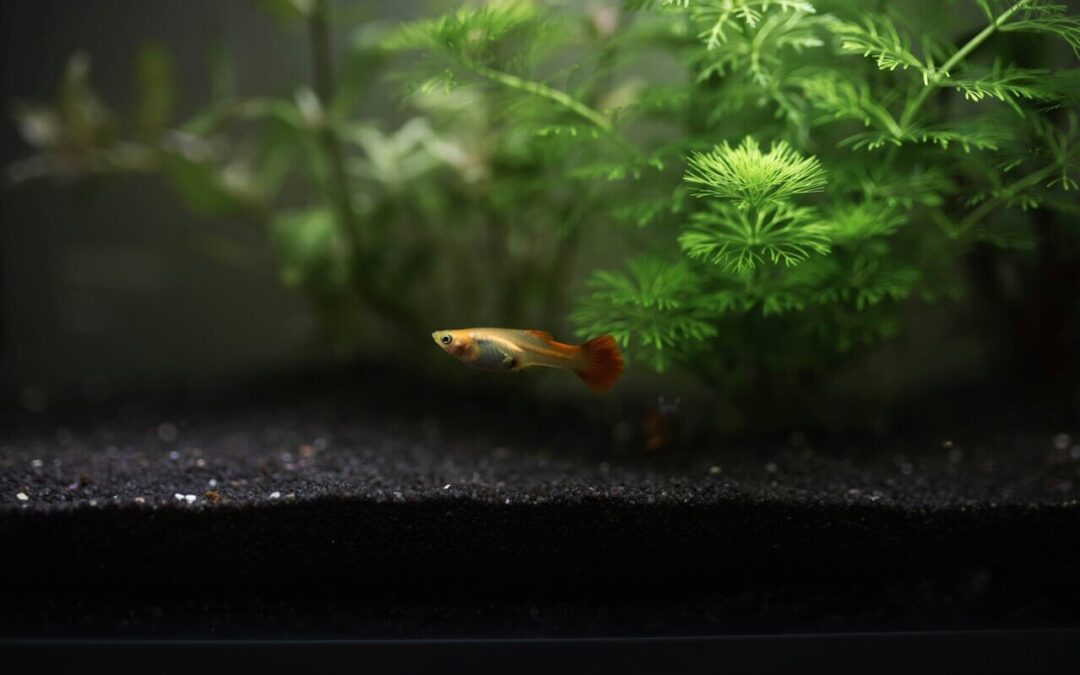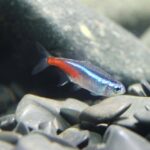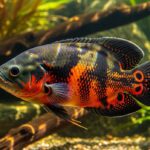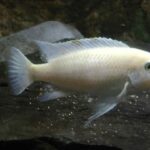If you’ve ever seen a guppy swimming gracefully with its colorful tail fanning out like a tiny underwater flag, you’ll know why these fish are so popular among aquarium hobbyists. Guppies are bright, active, and easy to care for—making them perfect for both beginners and experienced fish keepers.
But even though guppies are hardy, they still need the right environment to stay healthy and thrive. Setting up a proper aquarium is key. Let’s dive into everything you need to know about creating the ideal home for your guppy fish—from tank size and filtration to plants, lighting, and water quality.
Choosing the Right Aquarium Size
When it comes to guppies, size really does matter—at least when it comes to their tank.
A minimum of 10 gallons (about 38 liters) is recommended for a small group of guppies. This size allows enough swimming space and helps maintain stable water conditions. If you plan to keep more than three guppies, aim for 20 gallons (75 liters) or more.
Guppies are social fish and do best in groups. A good rule of thumb is 1 guppy per 2 gallons of water. For example:
- 3 guppies → 6 gallons minimum
- 6 guppies → 12 gallons or more
While they can survive in smaller tanks or bowls, these setups can quickly become unhealthy because waste builds up faster, and water quality drops rapidly. A larger aquarium is much easier to maintain and provides a more natural environment for your fish.
Water Conditions and Parameters
Guppies originate from warm, freshwater streams in South America, so they prefer clean, slightly alkaline water with a gentle current.
Here’s the ideal range to keep them happy:
- Temperature: 72–82°F (22–28°C)
- pH Level:0–8.0
- Water hardness: 8–12 dGH
- Ammonia & nitrite: 0 ppm
- Nitrate: below 40 ppm
You’ll need a good aquarium heater to keep the water temperature consistent, especially if you live in a cooler climate. Guppies are tropical fish, and sudden temperature drops can stress them out or lead to illness.
To keep water clean and safe, use a water conditioner to remove chlorine and heavy metals before adding tap water to the tank. Regular water changes—about 20–25% once a week—will also help maintain optimal water quality.
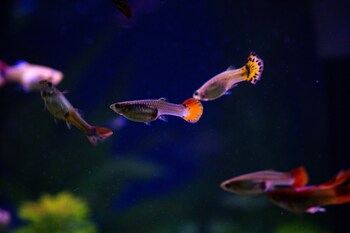
Filtration and Aeration
Guppies are active swimmers, and their tanks need a gentle yet effective filter system. A sponge filter or hang-on-back filter works best because it provides both mechanical and biological filtration without creating too much current.
A sponge filter is a favorite among guppy keepers because it provides gentle water flow, making it safe even for tiny guppy fry. Hang-on-back filters are also great options for larger tanks since they offer efficient mechanical and biological filtration.
If your tank isn’t heavily planted, consider adding an air pump to ensure adequate oxygen levels. You’ll notice your guppies swimming more energetically and showing off brighter colors in well-aerated water.
Plants and Decorations
Live plants aren’t just beautiful—they play a vital role in keeping your guppy aquarium healthy. They absorb nitrates, provide hiding places, and help maintain oxygen levels.
Some great beginner-friendly plants include:
- Java Moss: Perfect for guppy fry to hide in.
- Anubias: Hardy and grows well even in low light.
- Hornwort: Excellent for filtering water naturally.
- Water Wisteria: Adds a lush, green touch to your tank.
Avoid overcrowding the aquarium with too many decorations. Guppies need open areas to swim freely. A mix of live plants, smooth rocks, and maybe a small piece of driftwood creates a natural and balanced look.
Lighting and Substrate
Guppies don’t need intense lighting, but a consistent 8–10 hours of light daily helps maintain a healthy day-night rhythm and supports plant growth. Use a gentle LED aquarium light to mimic natural daylight.
As for substrate, fine gravel or sand works best. It’s easy to clean and gentle on the guppies’ fins. Choose a color that complements your fish—dark substrates often make guppy colors pop more vividly.
Feeding Your Guppies
Guppies are not picky eaters, but they do best on a balanced diet. Guppies are omnivores, meaning they eat both plant and animal matter. A balanced diet helps them stay healthy, vibrant, and active.
Their diet can include:
- High-quality flake food (for daily feeding)
- Frozen or live foods like brine shrimp or daphnia (for variety and color enhancement)
- Vegetable supplements such as spirulina flakes or blanched spinach
Feed small portions once or twice a day, giving only what they can finish in about two minutes. Overfeeding can lead to poor water quality, which is one of the most common causes of guppy health issues.
Fun and Interesting Facts About Guppy Fish
Now that we’ve covered the practical setup, let’s explore some fascinating guppy facts that make them even more special:
- They’re nicknamed “Million Fish.”
Guppies are famous for their rapid breeding—females can give birth to dozens of fry every month. This is why they’re called the “million fish.” - Each guppy has unique patterns.
No two guppies look exactly the same. Their tail colors, shapes, and markings are as unique as fingerprints. - They were once used to fight mosquitoes.
Guppies naturally eat mosquito larvae. In some tropical regions, they were introduced into ponds and rivers to control mosquito populations and reduce malaria risk. - Male guppies use color to attract females.
The brighter the color, the more likely a male guppy is to impress a female. Their vivid hues are a result of selective breeding and natural courtship behavior. - Guppies can adapt to brackish water.
While primarily freshwater fish, guppies can tolerate slight salinity. This adaptability makes them incredibly resilient compared to other species. - They’re great indicators of water health.
If your guppies suddenly become less active or their colors fade, it often signals poor water quality—making them natural “warning fish” for your aquarium.
Tankmates for Guppies
Guppies are peaceful fish, but not every species makes a good roommate. They get along well with other non-aggressive community fish such as:
- Mollies
- Platies
- Corydoras catfish
- Neon tetras
- Harlequin rasboras
Avoid keeping them with fin-nippers like bettas or barbs, which may damage their flowing tails.
If you plan to breed guppies, a separate breeding tank is recommended to protect fry from being eaten by adult fish.
Cleaning and Maintenance
Keeping a guppy aquarium clean is fairly simple once you develop a routine:
- Perform partial water changes weekly (20–25%).
- Vacuum the substrate to remove uneaten food and waste.
- Rinse the filter media gently in old tank water (never tap water).
- Trim dead plant leaves and clean the glass as needed.
Consistency is the secret to a thriving aquarium. Clean water and stable conditions will keep your guppies vibrant and healthy.
Common Mistakes to Avoid
Even experienced fish keepers can make mistakes. Here are a few things to watch out for:
- Overcrowding: Too many fish in a small tank leads to stress and disease.
- Skipping water changes: This causes ammonia and nitrate buildup.
- Using uncycled tanks: Always cycle your tank before adding fish to establish good bacteria.
- Ignoring pH and temperature fluctuations: Sudden changes can harm your guppies.
By keeping an eye on these details, you’ll ensure a happy and colorful guppy community.
Creating the Ideal Guppy Environment
Setting up an aquarium for guppy fish isn’t just about the tank—it’s about building a miniature ecosystem. Think of it as crafting a little underwater world where your fish can swim freely, show off their dazzling colors, and even raise fry if conditions are right.
A well-balanced guppy tank is not only relaxing to look at but also surprisingly low-maintenance once it’s established. With clean water, gentle filtration, healthy plants, and a steady feeding schedule, your guppies will reward you with endless movement and beauty.
Long-Term Guppy Care
With the right care, guppies can live up to 3–5 years, sometimes even longer in ideal conditions. The key is consistency: maintain regular water changes, feed them a balanced diet, and avoid sudden temperature shifts.
If you ever notice dull colors or sluggish movement, it’s usually a sign that something’s off—perhaps water quality, overfeeding, or overcrowding. Fortunately, guppies are quick to bounce back once conditions improve.
Many aquarists say that keeping guppies is how they learned patience and responsibility in the hobby. They’re forgiving enough for beginners, but still interesting enough to keep experienced fishkeepers captivated.
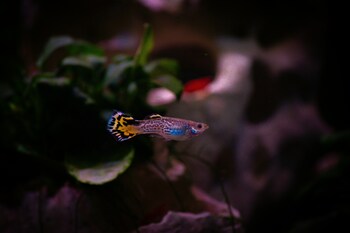
A Rewarding Experience
There’s something special about watching guppies thrive in a well-balanced aquarium. The soft hum of the filter, the gentle sway of plants, and the flash of colorful tails moving gracefully through the water—it’s both calming and mesmerizing.
Beyond their beauty, guppies remind us of the joy that comes from caring for living things. With just a bit of effort and attention to their needs, you can create a little underwater world that’s full of color, energy, and life—right in your own home.
Why Guppies Make Perfect Starter Fish
Guppies are often recommended for beginners because they’re forgiving of minor mistakes. They’re also colorful, lively, and interactive—they’ll even swim up to the glass to greet you during feeding time!
Watching them gives a calming, almost therapeutic feeling, which is why many aquarists call guppies “living art.” They teach beginners the basics of fishkeeping while adding color and life to any space.
FAQs About Aquariums for Guppy Fish
1. How many guppies can I keep in a 10-gallon tank?
You can comfortably keep around 4 to 6 guppies in a 10-gallon aquarium. Avoid overcrowding, as it can lead to stress and poor water quality.
2. Do guppies need a heater?
Yes. Guppies are tropical fish and thrive best in temperatures between 72°F and 82°F (22–28°C). A heater keeps the temperature stable.
3. Can guppies live without a filter?
While it’s possible, it’s not recommended. A filter keeps the water clean and oxygenated, which helps guppies stay healthy and active.
4. Do guppies need live plants in their tank?
Live plants aren’t required but are highly beneficial. They improve water quality, reduce stress, and give guppy fry places to hide.
5. How often should I clean my guppy tank?
Perform partial water changes once a week and deep clean the tank once a month. Avoid changing all the water at once—it can shock the fish.
6. Can guppies live with goldfish?
It’s best not to mix them. Goldfish prefer cooler water and can outcompete guppies for food, leading to stress or injury.
Final Thoughts
A guppy aquarium is a lively, colorful addition to any home. With the right setup—adequate tank size, clean water, proper filtration, and a touch of greenery—you’ll create a peaceful environment where your guppies can thrive.
They may be small, but guppies have big personalities and endless charm. Give them a well-planned aquarium, and they’ll fill your space with beauty, movement, and joy for years to come.

